In forex trading, there are several different types of forex orders that you may use. An order is simply the way that a trader enters or exits the forex market.
Although there are a variety of forex orders, the most common types include market orders, pending limit or stop orders, take-profit orders, stop loss orders and trailing stop orders.
Every trader has to understand the purpose of each of these types of orders and know when to use each one. As you gain more experience in foreign exchange trading, you will become more knowledgeable and comfortable with the different types of forex orders available.
Market Orders
A market order is an order that is executed immediately and automatically becomes an open position. This type of forex order is executed at the current market price which then fluctuates according to what is happening in the market. Market orders can be used for closing your opened trades as well.
When the trader wants to execute a market order, he needs to first decide whether he wants to buy (go long for the ASK price) or sell (go short for the BID price). The relevant button is clicked and the trading platform instantly executes that order as specified.
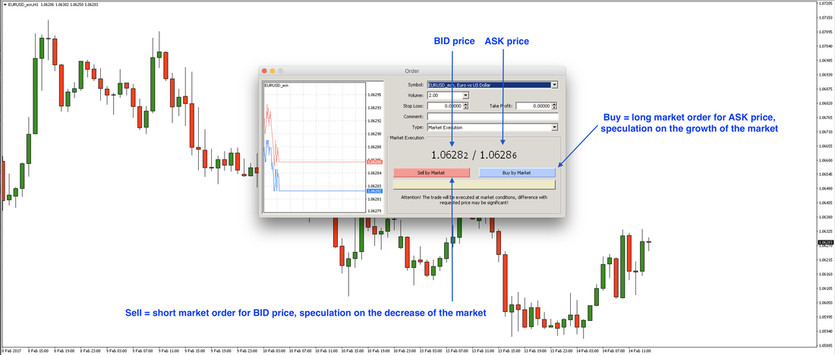
If the market moves against you, you will carry an unrealized loss until the order is closed. On the other hand, if the market moves as you anticipated, you will carry an unrealized profit until the position is closed.
H owever, since the market constantly fluctuates, you may fluctuate between unrealized losses and unrealized profits until you actually close the position.
Slippage: Market orders should be a subject to negative as well as positive slippage (or neutral).
TIP for traders using the MetaTrader 4 trading platform: Remember that to close a trade, you have to double-click your opened trade in the MT4's terminal, and then click at the yellow "Close" button highlighted in the picture below. Due to the fact that most retail forex brokers allow hedging, if you have opened a BUY order and click at the red SELL button, another trade will be opened. In case that hedging is allowed, trades are always closed by the yellow "Close" button in the MetaTrader 4.
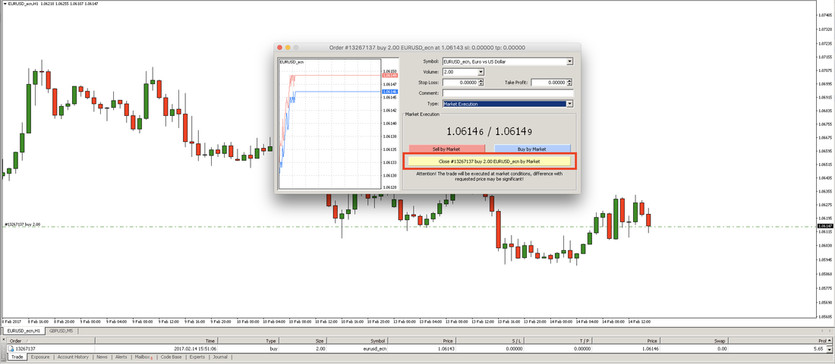
If there is no hedging allowed, then trades are executed by the FIFO rule (First In First Out).
Limit Orders
As the name suggests, limit orders are only executed under specific circumstances. This means that certain specified conditions must exist before such an order will be executed. For this reason, limit orders are pending orders.
Unlike market orders, they are not executed immediately. They are executed as soon as a market hits a price level of a pending order.
Buy limit orders are always placed below current price, and as soon as a market hits a price level of the order, BUY order is opened at the given price. Sell limit orders work exactly opposite, and are always placed above current price.
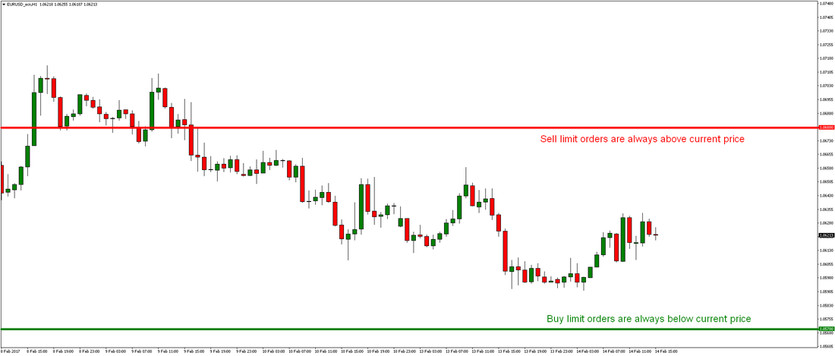
For example, if you are trading a currency pair and you believe that the bullish market will go through a correction and then continue in the bullish trend again, you could place a buy limit order that will be executed when the price decreases and reaches a certain level below current price.
On the other hand, if you expect a downswing, you may place a sell limit order which will get executed at the specified price level above current price. These orders have no effect on your account margin unless or until the orders are executed.
Buy limit orders are always executed for the ASK price, while sell limit orders are executed for the BID price.
Slippage: Limit pending orders should be a subject to neutral or positive slippage .
Stop Orders
Stop forex orders are pending orders speculating on a continuation of current market move. Like the limit orders, stop orders are executed as soon as a market hits a price level of a stop pending order. Stop pending entry orders are usually used in the breakout forex strategies.
Buy stop pending orders are always placed above current price. As soon as a market hits a price level of a buy stop pending order, the buy order is opened at the given price. Sell stop pending orders are always placed below current price.
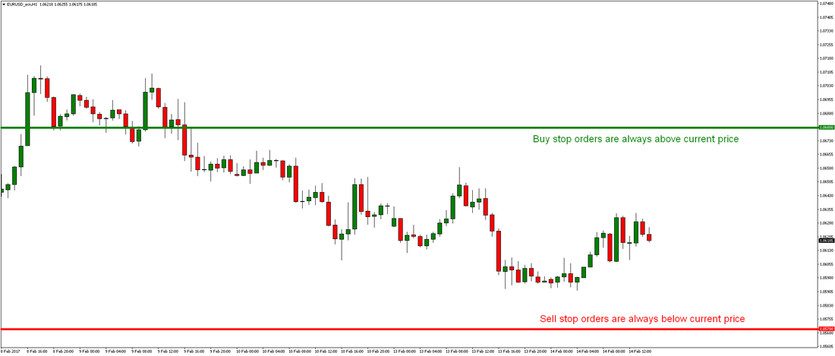
Buy stop orders are always executed for the ASK price, while sell stop orders are executed for the BID price.
Slippage: Stop pending orders should be a subject to neutral or negative slippage .
Stop-Loss Orders
Stop loss orders are arguably the most important type of forex order. This is because stop-loss orders limit the losses that a trader can make on any one trade.
This type of orders prevents margin closeouts and is automatically triggered whenever a trade has registered unrealized pending losses amounting to a pre-determined sum by setting the Stop-Loss at a certain price level. Stop losses automatically close a position and prevent further losses.
Stop-Loss orders for SELL trades are always placed above entry / current price, while Stop-Loss orders for BUY trades are always placed below entry / current price.
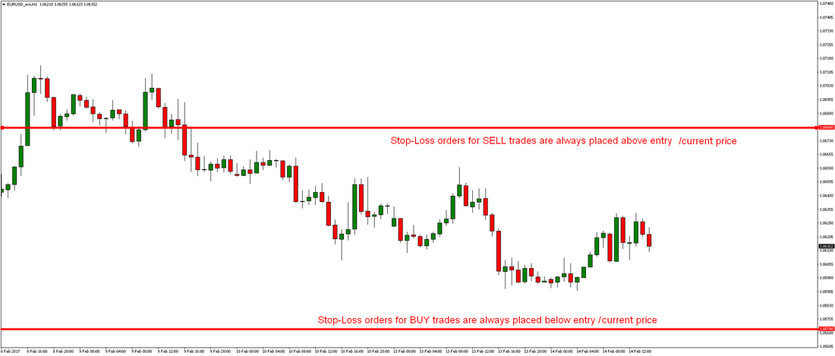
Stop-Loss orders are nothing more than the stop pending orders (used for trade exits). Stop-Loss orders in case of BUY trades are executed for the BID price, while Stop-Loss orders in case of SELL trades are executed for the ASK price.
Slippage: Stop-Loss orders are a subject to neutral or negative slippage .
Take-Profit Orders
With take-profit orders, your position is automatically closed out once you have realized a specified level of profits based on a given price level of the profit-target order. This type of order is useful when you are not available to close a position manually or just would like to limit emotions and set clear trade goals. So, if the market ever reverses against you, you would have already secured your profits and exited the market.
Take-Profit orders for BUY trades are always placed above entry / current price, while Take-Profit orders for SELL trades are always placed below entry / current price.
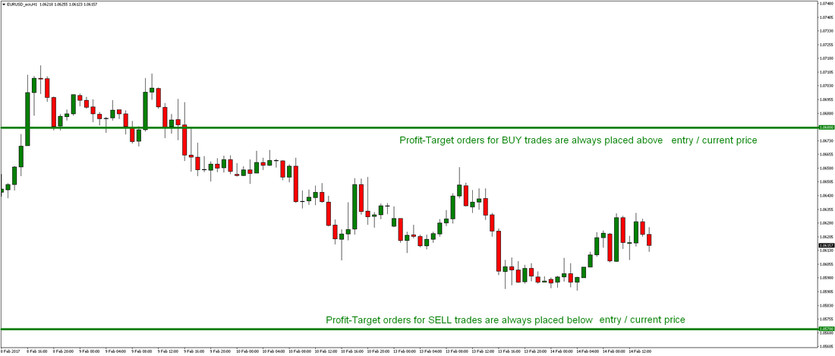
Take-Profit orders are nothing more than limit pending orders (used for trade exits). Take-Profit orders in case of BUY trades are executed for the BID price, while Profit-Target orders in case of SELL trades are executed for the ASK price.
Slippage: Take-Profit orders should be a subject to neutral or positive slippage .
Trailing Stop Orders
Trailing stop orders are very similar to stop loss orders. However, the trigger price automatically follows the market price at an established distance as long as price is moving as anticipated. If a price moves against you, the trigger price remains fixed and is triggered once it is reached by a market. Therefore, your losses are reduced but your trade may also gain in value if a price moves in your favor.
If you would like to try out the trailing stop-loss, you have two possible options in general:
1) Use the trailing stop-loss function that is already built in the MetaTrader 4 trading platform. Simply right-click at your opened order and choose "Trailing Stop". However, when using the MT4's Trailing Stop, you have to choose a fixed value that will be used for trailing the stop-loss order.
Also remember to not turn off your MT4 while using the Trailing Stop. If you do so, the last value of the trailed stop-loss will be kept at the servers of your broker, but the trailing function will not work anymore.
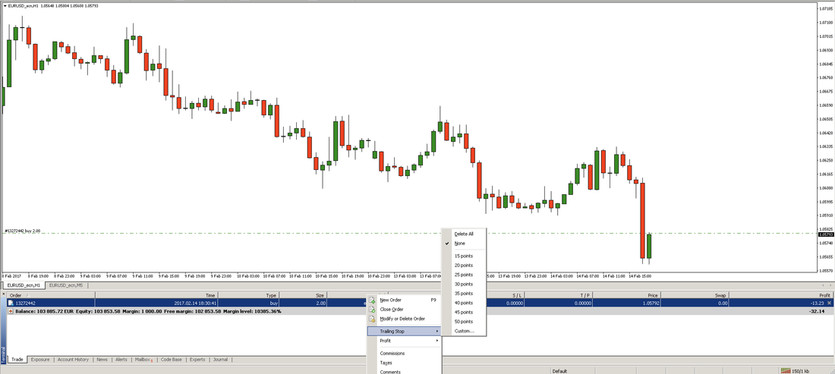
2) Use trend indicators like Parabolic SAR , Moving Average , or others , and simply trail the stop-loss order based on the line / value of the trend indicator. However, you will have to trail the stop-loss manually (if some automated Expert Advisor will not be used).
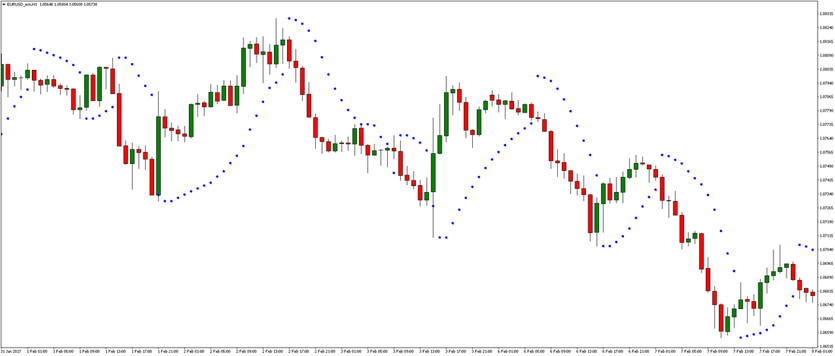
Conclusion
The type of forex order that you choose to use, depends on current market situation and on how you expect the market to move. For instant trades, market orders are used. However, orders such as limit and stop orders, stop-loss orders, trailing stop orders and take-profit orders are pending and are only triggered if the market approaches a predefined level of the orders.
It is also important to say that Stop-loss orders should ideally be used by all traders to minimize trading losses. Knowing when and how to use the forex orders is one of the keys to a professional forex trading.





